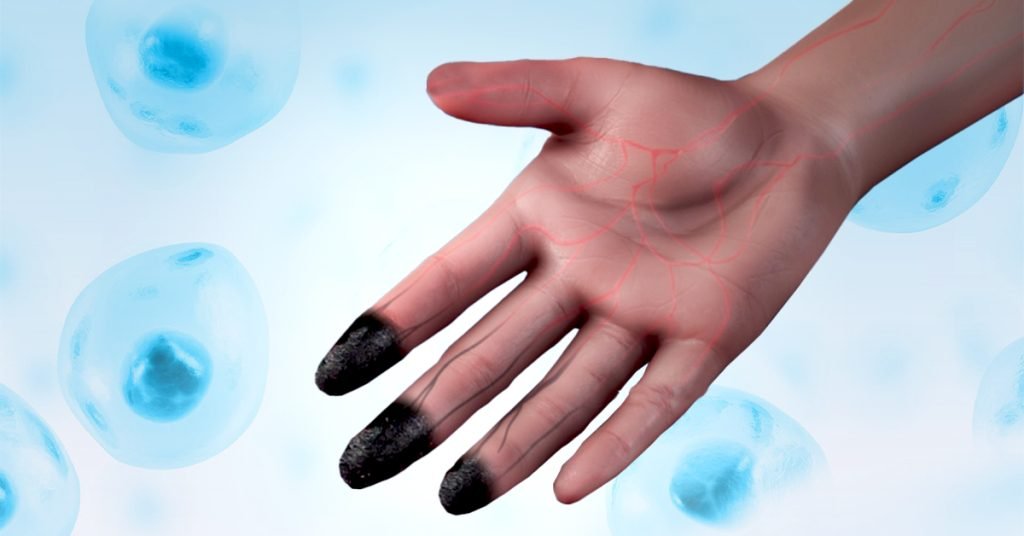Exosome therapy offers a groundbreaking, non-invasive approach to treating Buerger’s disease by promoting blood vessel regeneration and reducing inflammation. Unlike traditional methods, it harnesses the body’s natural healing signals to improve circulation and prevent complications. As research advances, exosome treatment shows promising potential for restoring limb function and offering new hope to patients worldwide.
What Is Buerger’s Disease?
Causes and Risk Factors
Buerger’s disease—also called thromboangiitis obliterans—is a rare, progressive condition that causes inflammation and clotting in small- to medium-sized blood vessels, especially in the arms and legs. As blood flow becomes restricted, tissues can be starved of oxygen, potentially leading to pain, ulcers, and, in advanced cases, gangrene.
Although the exact cause remains uncertain, tobacco use is the number one trigger. Research strongly suggests that substances in tobacco may provoke an autoimmune reaction, causing the immune system to mistakenly attack healthy blood vessels.
Additional risk factors include:
- Genetics – Some people may inherit a predisposition to vascular inflammation.
- Chronic infections – Particularly of the gums or skin, which may intensify immune overreactions.
- Autoimmune sensitivity – A misfiring immune system may respond abnormally to environmental triggers like tobacco.
Symptoms to Watch For
Because Buerger’s disease affects blood circulation, symptoms often start in the hands or feet and may spread upward as the disease worsens. Look out for:
- Pain or cramping in the limbs while walking (claudication)
- Coldness, numbness, or tingling in the extremities
- Skin color changes—fingers or toes turning pale, bluish, or reddish
- Open sores or ulcers that don’t heal
- In severe cases, gangrene, which may require amputation
These symptoms typically worsen with continued tobacco use and improve—or even halt—when tobacco is eliminated entirely.
Who Is Most at Risk?
Buerger’s disease primarily affects men between 20 and 45 years old, but rates among women are rising, likely due to increased tobacco use. People who smoke heavily or use other forms of tobacco (including chewing tobacco) are most vulnerable.
The disease is also more prevalent in regions where smoking is widespread and access to healthcare may be limited—such as parts of Asia and the Middle East. However, cases are seen worldwide, including in the U.S., particularly among smokers.

